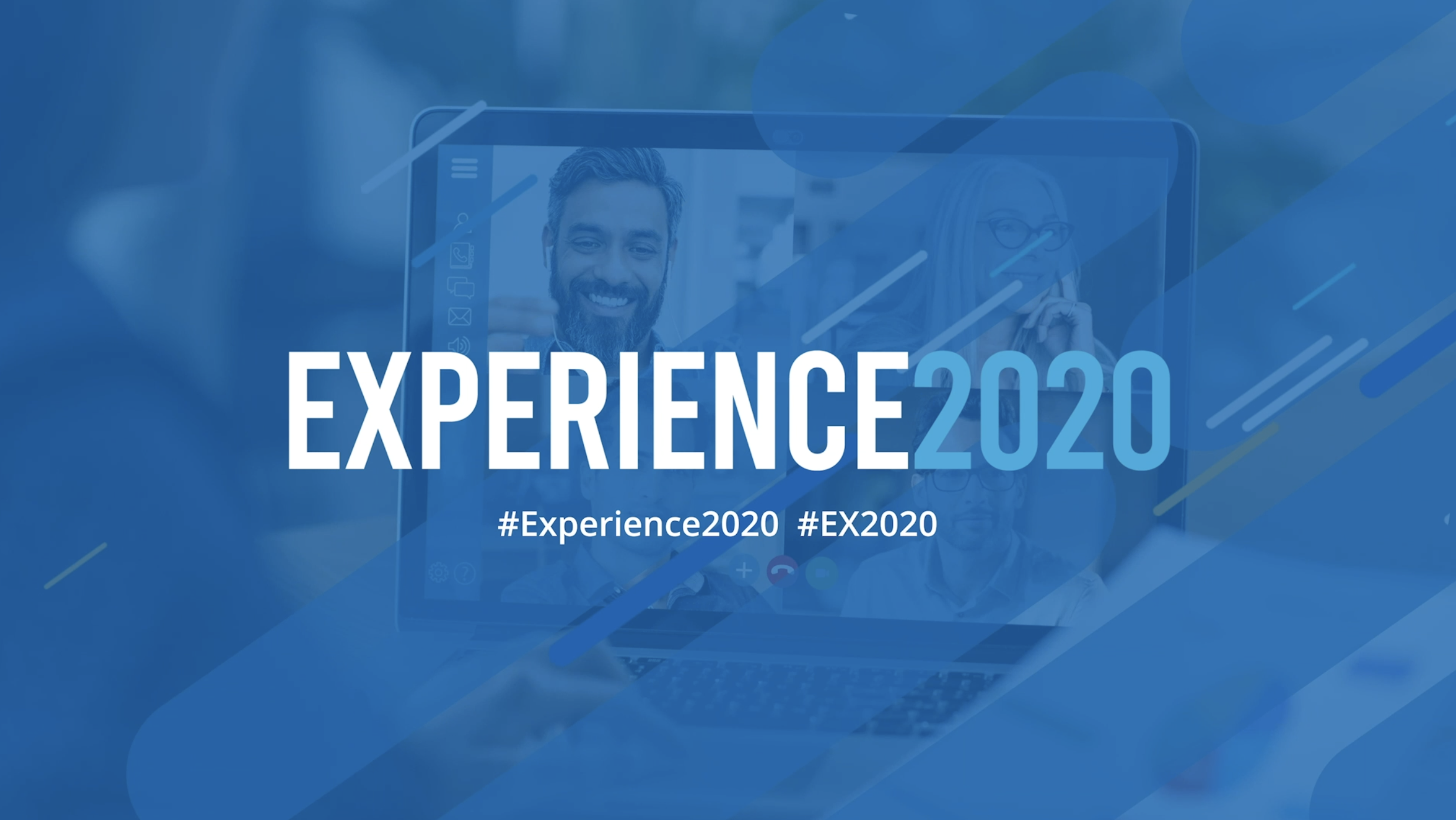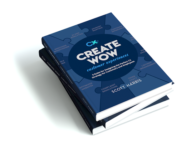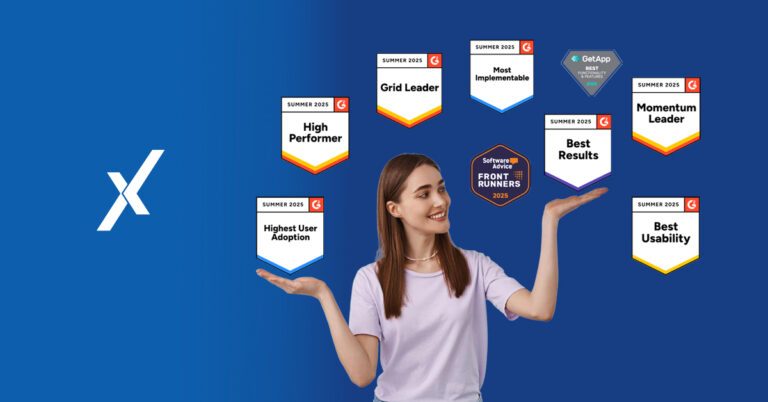Experience.com CEO Scott Harris joined customer experience experts JJ Jah and Ashish Srimal to discuss all the dramatic ways customer experience strategies have evolved over the years and where the industry is headed.
During the last day of Experience2020, Experience.com CEO, Scott Harris sat down with two leading experts in the customer experience industry: JJ Jah and Ashish Srimal. With more than 20 years worth of experience building brands in the financial services and retail industries, Jah has recently joined Caliber Home Loans as the company’s new chief marketing officer. Srimal has far-reaching experience in CX, as both a SaaS CEO and board member, as well as a CRM and CX tech executive. He also serves as an investor in a number of software technology companies.
The three CX executives had a lively and insightful conversation, covering a number of customer experience trends: From all the ways CX has evolved and the need for consolidating your CX programs to ROI it can deliver and where it is headed.
With so much to learn from the conversation, we put together the following recap of all the highlights.
How has CX Evolved?
If you went to business school, you probably learned about the “Three C’s of Marketing” — one of those C’s being Customer. You were likely taught that the customer is the end goal and to make sure they pick you over the competition. Around 2005, we started evolving the ‘Customer’ to become a set of data, which allowed you to differentiate one customer from another. Finally “Customers” went from being data to being Everything. Now, instead of the customer being the end goal, you start with the customer.
In the early 1990s, Peppers and Rogers talked about one-to-one marketing. This personalized marketing strategy centered around companies leveraging data analysis and digital technology to deliver individualized messages and product offerings to current or prospective customers. At the time, the concept was new and enticing, but brands didn’t have the tools to execute it. Then, in the early 2000s, Customer Relations Management (CRM) systems came along. CRM platforms allowed companies to manage and analyze customer and prospect interactions on a historical basis. With CRMs, brands could take large swaths of customer data and make assumptions about their audience to help drive sales and inform marketing activities.
As we’ve evolved to where we are today, the one-to-one marketing concept put forward by Peppers and Rogers more than two decades ago has now become a reality. The brands that have been able to design one-to-one customer experiences across their customer services, sales, and marketing programs, have created much happier customers — therein lies the secret to creating the ultimate customer experience strategy.
That is really the crux of the evolution from CRM to CX. It was always meant to satisfy a customer-centric mindset by using first-party data and first-party capabilities to impact that one customer. As technology has evolved, we can now ingest our customer data to create sophisticated one-to-one customer experiences — leading entire audience segments to be more satisfied which positively impacts the brand’s bottom line.
Consider the transactional time for a mortgage: From start to finish a loan officer can be interacting with one customer for two months. This time includes multiple customer experiences, from shopping around and loan processing details to closing the loan. If you wait until the end of that journey to survey the customer, their experience is going to be heavily reliant on the last step of this milestone.
That’s why it’s so important to monitor the process throughout the various stages. First of all, you need to find out, from the customer, the moments that matter most to them. From there, you can begin focusing on those moments, asking a smaller subset of customer experience questions about specific stages of the process. Asking a customer three questions during different stages of the customer journey will get you much better data than asking them 30 questions at the end of the full experience.
It’s really about mapping the customer journey, and finding those moments that matter within that journey. For every customer — whether you’re applying for a mortgage loan, opening a credit card account, or interacting with a manufacturer that is selling goods online — you have critical “turning point” moments.
The primary question for enterprise organizations: How do you capture the customer’s experience during those crucial moments and optimize them? It can be broken down into the following three steps: First, you have to identify and measure that moment and collect the data. Second, once you’ve collected the data, you have to analyze it to find trends and patterns across your CX programs. Third, you have to be able to act on and amplify that data in real-time. This will help you uncover those important micro-moments in the customer journey.
Once you’ve figured out the key micro-moments, you can begin to amplify those moments by integrating them into sales motions, marketing motions and service motions, tailoring the customer journey to the customer’s expectations. A great example here is the mortgage industry. Let’s say a customer is applying for a home loan — there comes a point where they are supplying all of their documents to the mortgage banker. It is a difficult and tedious process and it’s easy for the customer experience to slide off the rails. It has nothing to do with the mortgage bank or their loan officer, it’s just that the overall process can be difficult and time-consuming.
The technology may be right, but can vary experience depending on the customer: Maybe the customer is on a mobile device. Maybe they are on a laptop. Maybe they are meeting their loan officer at a Starbucks — or walking to their office right now. If I can capture where the one-on-one experience does not meet the customer expectation, in real time, I can likely solve the problem.
If you’re able to capture and operationalize these moments, it’s a major financial gain. An average loan in the San Francisco Bay area is a million dollar loan — if you are able to save one loan experience, that matters. Boosting these micro-moments and advancing your customer experience programs translates to your CX strategy becoming a significant revenue generator over time.
The entire customer journey matters. CX is about meeting the customer at the exact right time and the exact right moment no matter what stage of the customer journey they happen to be. CX today is about getting the most information you can at the right moment, with as little intrusion on the customer as possible. Customer experience strategies are still evolving, but we’ve made tremendous leaps with the technology we now have available to build strategic CX programs.
The Consolidation of CX
There are two types of companies: The company that thinks of customer experience as a ‘nice to have’ thing and the company that understands the customer is not “nice to have” but the very reason for the brand’s existence. The companies that prioritize their customers and the customer experience will win every time.
CX is a journey. You have to win small to win big. You can see this across hundreds of customers, the answer really lies with consolidation. If you don’t consolidate your customer experiences, it’s very difficult to reach a stage where you can cross-sell costs across departments.
The next question becomes who owns this? The CMO? The COO? The department head? Or should this be owned by an entirely new CX department led by the CXO, a Chief Experience Officer? Not every company and industry is ready to establish a business unit devoted to CX, however it’s a goal every brand should strive for if they want to remain competitive. A recent Forbes study showed that company’s with a $1 billion-plus in revenue, that were committed to a Customer Experience centricity, were able to generate $700 million in cost savings over the course of three years, as well as increase revenue.
In order to meet such lofty goals, there needs to be someone among the C-suite who sits at the same table with the CEO, the Head of Revenue, and the Head of Customer Service.
What is the ROI of CX?
There is a CX ROI formula, and it’s measurable, which makes CX so exciting. If you place CX into three levels you can measure the ROI at each of them: Easy, medium, and hard.
Level 1: The “Easy Level” includes tactics like referrals on the marketing side, which are linked to actions. If you can calculate the lifetime value of a customer and multiply it by the number of customers, there’s a value. It’s calculated and measurable. Also, retention falls into the easy category. If you’re able to calculate the lifetime value of the customer, times the number of customers that you’ve retained, times an attribution coefficient for CX, that’s your number.
Level 2: The “Medium Level” tactics include cross-sell and up-sell opportunities. Once a customer has a positive customer experience, you create an environment where they are more likely to accept further offers that can drive revenue. You can then measure these experiences through the lifetime value of the customer across the wallet share.
Level 3: The “Hard Level” tactics involve behavioral attributes, which includes employee experience. This is when you have the employee experience attribute coefficient, which you attribute to a location that you can analyze to get the total revenue gain. The attribution of that employee experience and customer experience is the product.
To determine your final ROI of CX, you would take the sum of the three categories above and divide it by people, process and technology, and then total the cost of that amount is how you arrive at your ROI.
What’s Next for CX?
Many companies have figured out the magic that CX can deliver and have put customer experience at the core of their business. Companies like Uber and Airbnb, that have made CX the backbone of their corporate structure, have proven how impactful an effective customer experience strategy can be on the brand’s bottom line. While some organizations may not have the resources or budget to deploy a full CX strategy, they can slowly incorporate CX into their business.
Even if you are only able to integrate a level one or level two program, you can begin to build a CX program that feeds into every function of your business. It may be slow-going to start, but you’ll eventually get there!











